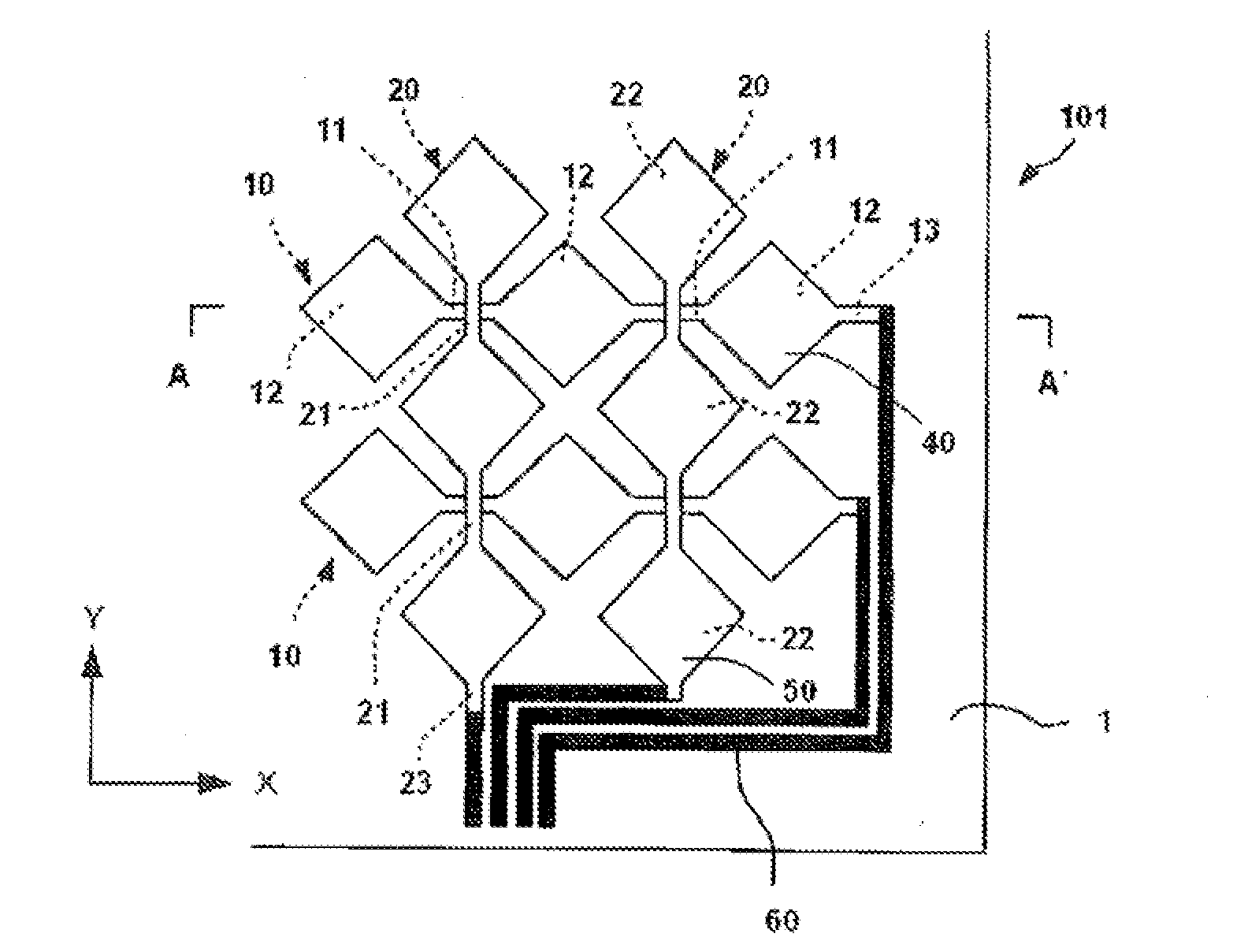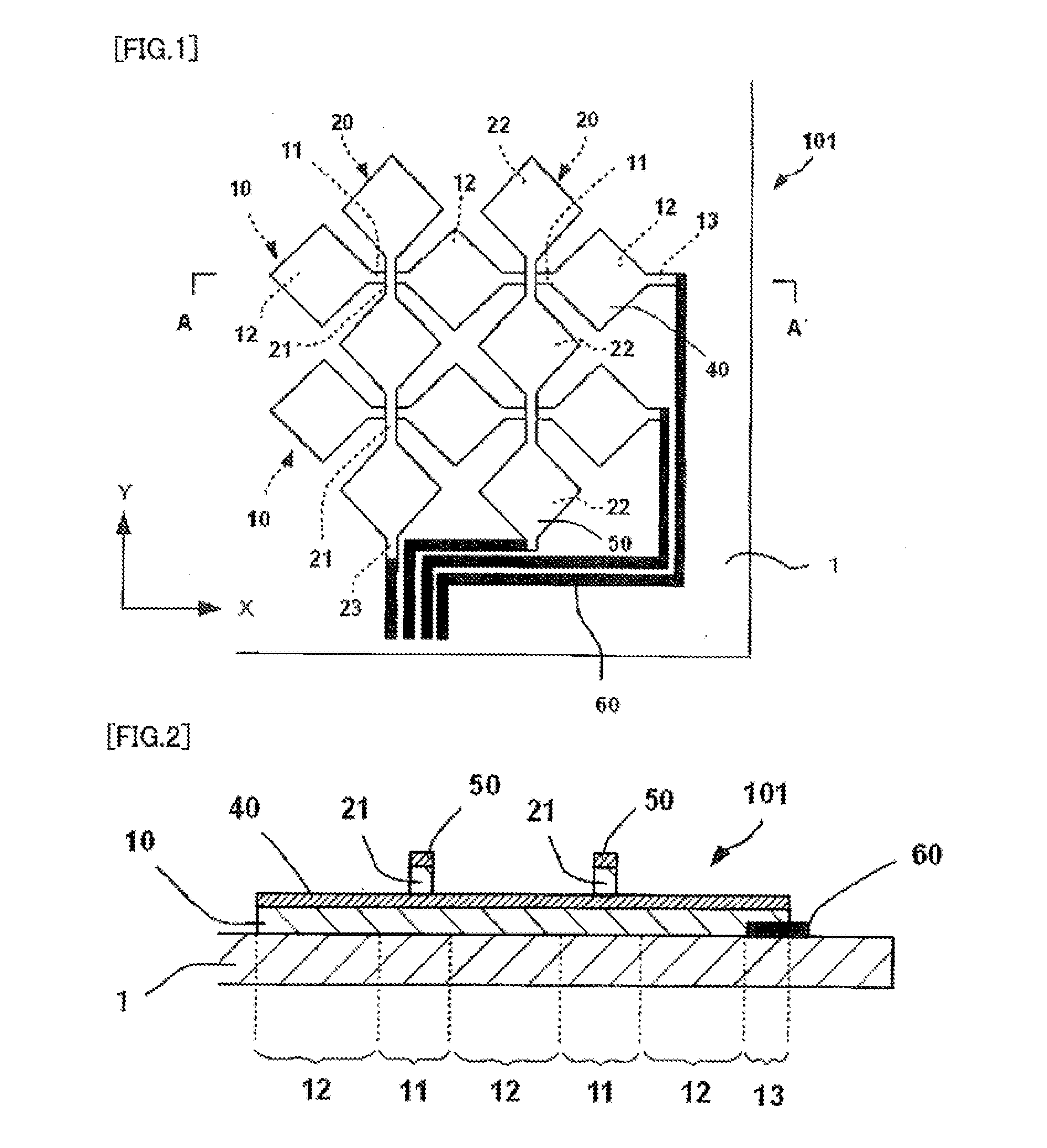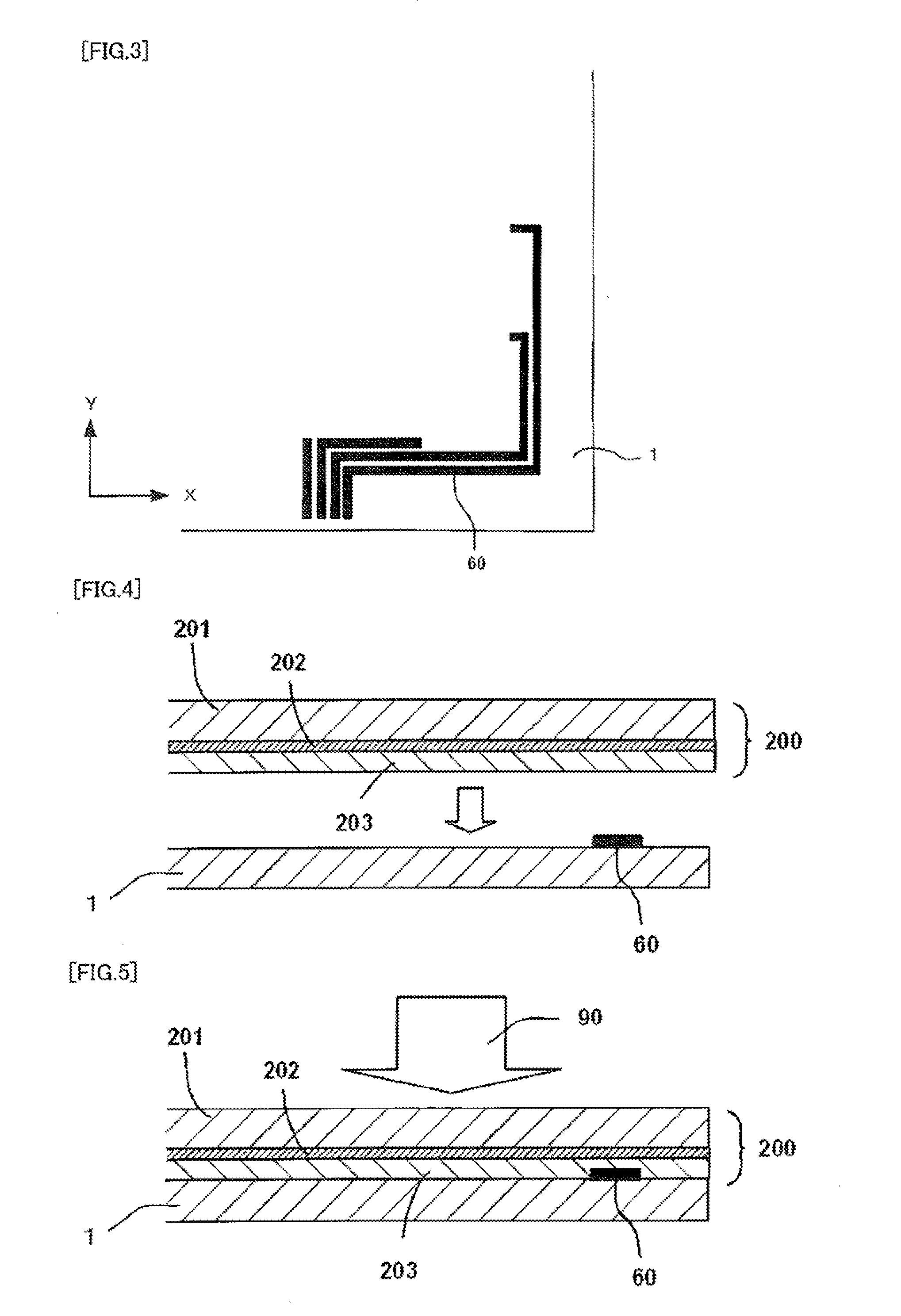Touch sensor and manufacturing method for the same, as well as transfer ribbon for touch sensor manufacturing
- Summary
- Abstract
- Description
- Claims
- Application Information
AI Technical Summary
Benefits of technology
Problems solved by technology
Method used
Image
Examples
first embodiment
[0070]Hereinafter, an embodiment of a touch sensor according to the present invention will be described with reference to the drawings. FIG. 1 is a partially enlarged plan view showing an example of the touch sensor according to the present invention. FIG. 2 is an A-A′ cross-sectional view of FIG. 1.
[0071]A touch sensor 101 shown in FIG. 1 includes X electrode films 10 as a plurality of first electrode films and Y electrode films 20 as a plurality of second electrode films on one surface of one substrate.
[0072]The substrate 1 is an electrically insulating substrate and may be, for example, a glass substrate, a PET (polyethylene terephthalate) film, a PC (polycarbonate) film, a COP (cycloolefin polymer) film, a PVC (polyvinyl chloride) film, or the like. In particular, the COP film is preferred since it is excellent not only in optical isotropy but also in dimensional stability and further processing accuracy. It should be noted that when the substrate 1 is a glass substrate, the thi...
second embodiment
[0099]Next, a second embodiment will be described. It should be noted that the description of components common to those of the first embodiment is omitted and components only according to the second embodiment will be described.
[0100]Each routing wire 60 of the first embodiment is connected to the one end of the X electrode film 10 or the Y electrode film 20 from the substrate 1 side, but in the second embodiment, each routing wire 61 is configured to be connected to one end of the X electrode film 10 or the Y electrode film 20 from a side opposite to the substrate 1 (see FIG. 14).
[0101]In this case, in the manufacturing process for a touch sensor 102, first, a first transfer step (see FIGS. 15 to 17) and a second transfer step (see FIGS. 18 to 20) are conducted, and then a routing wire forming step (see FIG. 14) is conducted. In the routing wire forming step, the routing wires 61 are pattern-formed by screen printing or the like using a metal paste such as gold, silver, or copper....
third embodiment
[0103]Next, a third embodiment will be described. It should be noted that the description of components common to those of the first and second embodiments is omitted and components only according to the third embodiment will be described.
[0104]Each of the routing wires 60 and 61 of the first and second embodiments is connected to the one end of the X electrode film 10 or the Y electrode film 20 from the substrate 1 side or from the side opposite to the substrate 1, but in the third embodiment, each routing wire 62 is configured to extend from the X electrode film 10 or the Y electrode film 20 and be formed as a film integrated therewith. In other words, the material of the routing wires 62 is the same as that of the X electrode films 10 and the Y electrode films 20. In addition, the first insulating films 40 and the second insulating films 50 are formed on the routing wires 62 so as to cover the entireties thereof except for terminal portions thereof (see FIG. 21).
[0105]In this cas...
PUM
 Login to View More
Login to View More Abstract
Description
Claims
Application Information
 Login to View More
Login to View More - R&D
- Intellectual Property
- Life Sciences
- Materials
- Tech Scout
- Unparalleled Data Quality
- Higher Quality Content
- 60% Fewer Hallucinations
Browse by: Latest US Patents, China's latest patents, Technical Efficacy Thesaurus, Application Domain, Technology Topic, Popular Technical Reports.
© 2025 PatSnap. All rights reserved.Legal|Privacy policy|Modern Slavery Act Transparency Statement|Sitemap|About US| Contact US: help@patsnap.com



